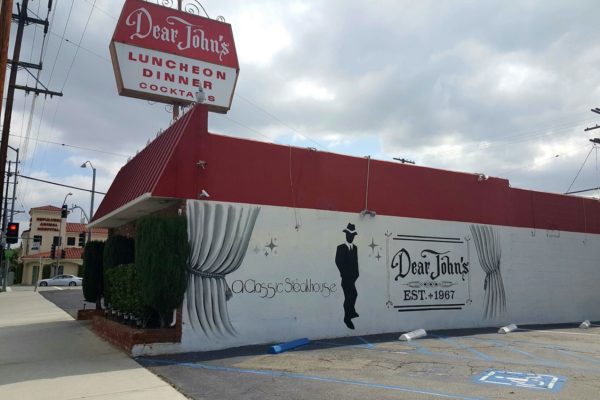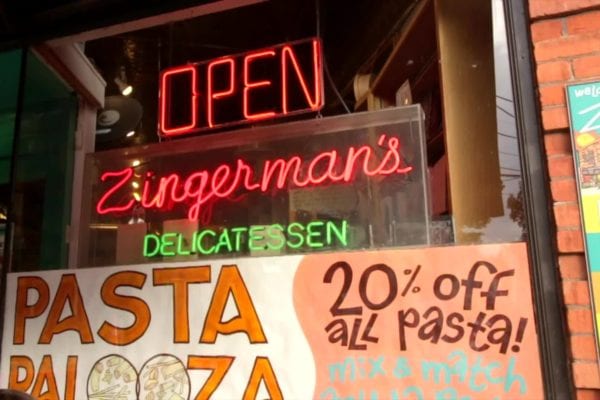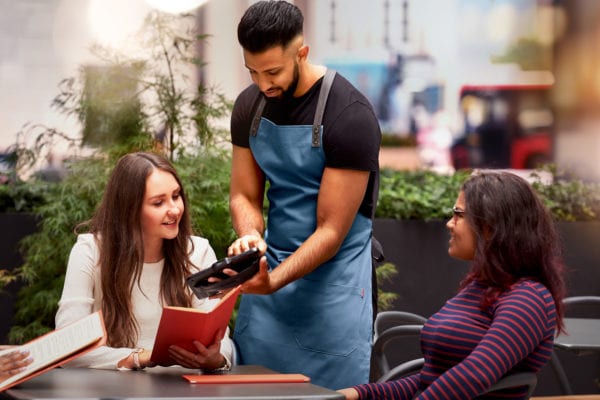Skift Take
This is more a testament to the challenging conditions at restaurants in major markets than it is an endorsement of creativity at quality cocktail bars.
— Jason Clampet
For the last 88 years, Zabar’s has been New York’s most high-profile deli, known for the quality of its smoked salmon and its array of cheeses.
In 2018 it got into the cocktail business. Oliver Zabar, grandson of co-founders Louis and Lillian, opened Devon, a bar on the Lower East Side of Manhattan with drinks such as the Where’s Tom Collins? and Tiki Rum Manhattan, a concoction based on pink-peppercorn-infused spirits.
Zabar’s isn’t the only institution in New York that’s added a notable drinks program to its model. When Starbucks brought its 23,000-square-foot Roastery to the Meatpacking District in mid-December, the most exciting feature wasn’t the 30-foot hammered copper kettle, it was the Arriviamo bar. It’s Starbucks’ first in the U.S. and its second outside Milan.
The cocktail program is ambitious, choreographed by rising-star mixologist Julia Momose, whose drinks include the Negroni-styled Nocino Notte, a mix of gin, Gran Classico bitter, and house cold brew. Even Momofuku Noodle Bar, the place that jump-started the city’s ramen obsession more than a decade ago, has finally introduced a dedicated bar at its new outpost in Columbus Circle. (The original location just has a spiked slushy machine.) Momofuku’s program features highballs such as the Fun Guy, an unconventional mix of shiitake-infused soju and vermouth.
And these are just three examples of why the dish of the year in New York comes in a glass.
Otherwise, it’s been a lackluster year for the city’s new restaurants.
Culinary news has been dominated by closings—including Danny Meyer’s North End Grill in the Financial District, 20-year-old Red Cat in Chelsea, and cult favorite Dell’anima in the West Village—as high rents and high food and operating costs make the business ever more challenging. And there wasn’t any new blood that dominated the conversation (though, for the record, my vote for New York’s best new restaurant is the groundbreaking Korean omakase at Atomix). The only thing critics could agree on is that they didn’t want to see any more sandos, the cutlet-filled Japanese sandwiches that made headlines when Don Wagyu’s $185 versions appeared.
Apart from the eye-raising price tag on a sandwich and Salt Bae’s steak sprinkling, none of New York’s new dining rooms created dishes that generated genuine buzz. Sure, I found food to be happy about at a handful of highest-profile places, such as nouveau brasserie Frenchette and pasta-and-vegetable-focused Misi, but there was nothing like the pink peppercorn malfadini that Misi’s co-owner introduced at her first Brooklyn restaurant, Lilia. And nothing that generated the excitement I felt when I walked into Existing Conditions and saw clouds of liquid nitrogen as bartenders put a fast chill on their glassware. Or when I put a coin into a machine dispensing bottled drinks near the entrance and tasted my first Cinema highball, made with buttered-popcorn-washed rum and coke.
Bartenders are now seriously challenging chefs in terms of creativity—and along with other diners, I can’t get enough.
“Right now, we have the highest-quality ingredients, the most creativity mixing them, and guests that are often more adventurous than bartenders in wanting to try new things,” says Existing Conditions co-owner Don Lee, who’s helped pioneer drinks such as the Strawberry Carbonita, which riffs on a fruity margarita by adding bubbles and using clarified strawberry, orange, and lime to make it crystal clear and trick the eye.
Zabar echoes that assertion. “The movement to innovate in the kitchen led to creative innovation in the bar. Bartenders saw what kitchens were putting out and said to themselves, ‘Hey, I can do that,’ ” he says. “To mix a metaphor for a second, food and cocktails are apples and oranges, but increasingly, cocktails are the star of the show.”
The Major Food Group, whose empire includes the Grill, the Pool, and Carbone, opened its first nonrestaurant bar, the Polynesian. The tiki throwback features Brian Miller’s flaming cocktails in terrific glassware. Even the city’s ridiculous rooftop bar scene got upgraded this year, when tropical drink specialists Broken Shaker opened on the 18th floor of the Freehand Hotel.
At Undercote, the subterranean lounge beneath the Michelin-starred Korean steakhouse Cote, the décor evokes a nighttime jungle. Sondre Kasin crafts drinks such as the Raspberry Beret with eau de vie, citrus, and whey. Not too far away in the West Village, Katana Kitten is an exhilarating two-story Japanese bar that also specializes in highballs, including a Paloma made with toasted jasmine tea in a glass rimmed with smoked salt.
It’s both this creative range, where Asian-accented tequila classics sit next to expert tiki revivals, and the fact that you can find them everywhere, from the bottom of Manhattan to uptown, that makes this particular moment in New York’s cocktail scene extraordinarily compelling.
On the 60th floor of 28 Liberty in the financial district, for instance, Manhatta from the Union Square Hospitality Group has even become better known as a bar than a restaurant. It’s on track to serve 2,000 of its signature Manhatta drinks by the end of December, notes beverage director Matt Whitney.
Jim Meehan, co-owner of PDT, says this development reflects a maturity in the city’s cocktail scene: “New York’s cocktail program is growing up. Places like Milk & Honey are 15 years old now. They’re in their more inventive, teenage stage.”
This cocktail moment extends beyond bars. It’s also been an exceptional year for drinks-focused books, from the Cocktail Codex handbook from the Death & Co team to The Mini Bar, a delightful, pocket-size compendium from the online drinks magazine Punch.
Most monumental of the pack is The Aviary Cocktail Book, released by the Chicago bar of the same name with a second location now in New York. The breathtaking 444-page, 7.2-pound tome is not for casual bartenders: Remember the Maine, with specially made ice, is one of the simpler recipes, having only 11 ingredients. But the public was thrilled by the idea of producing such a treasure to the trade. The Kickstarter program that funded the book had a stated goal of $60,000. The campaign raised almost $424,000, showing just what an appetite there is for cocktails.
So raise a glass to New York’s dish of the year, the cocktail. And for my money, make it a highball. If there was one style that soared above the rest—thanks to Momofuku’s and Katana Kitten’s lists and Existing Conditions’ redefined rum and coke—this was it. Cheers!
©2018 Bloomberg L.P.
This article was written by Kate Krader from Bloomberg and was legally licensed through the NewsCred publisher network. Please direct all licensing questions to [email protected].
![]()




